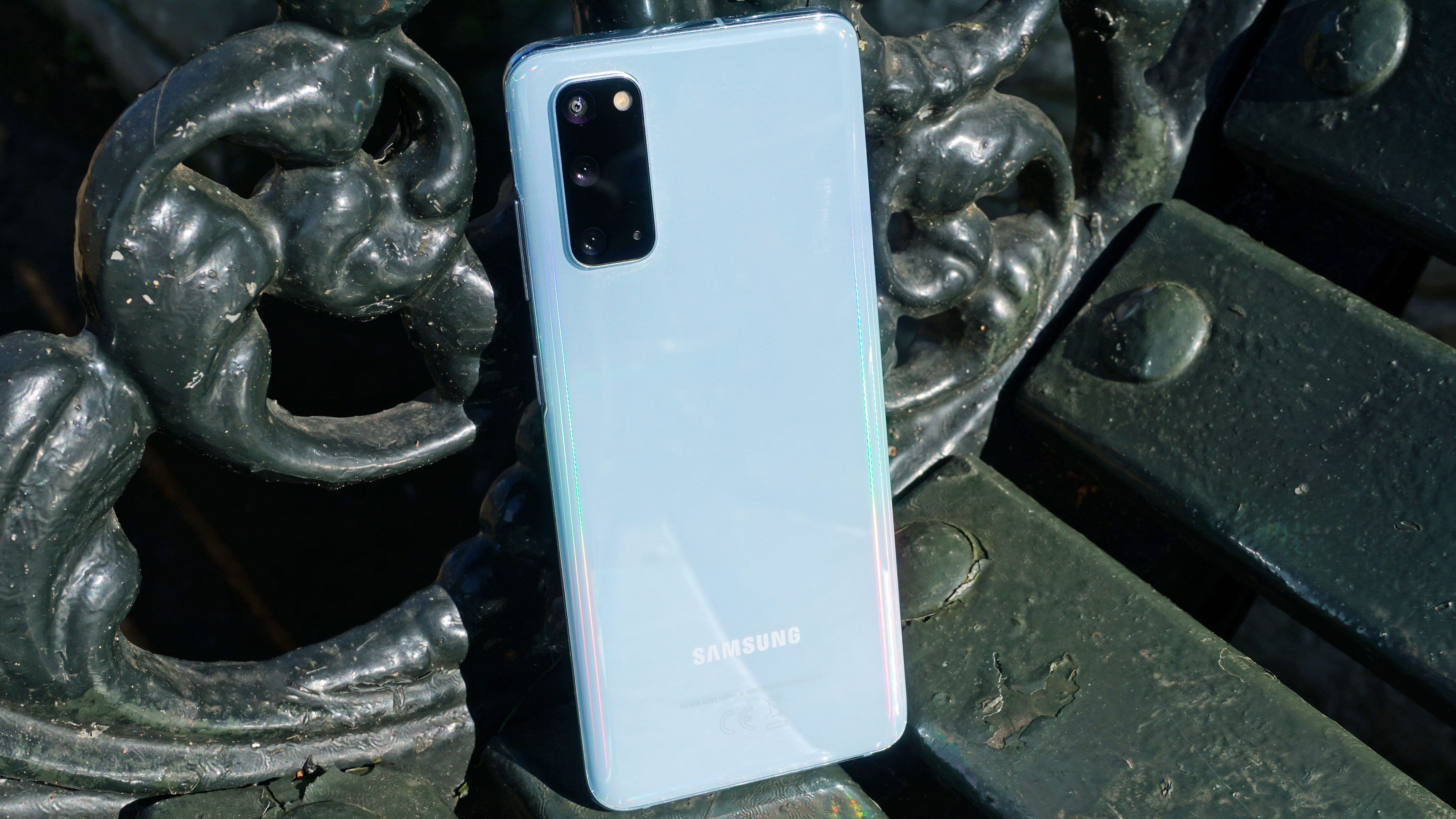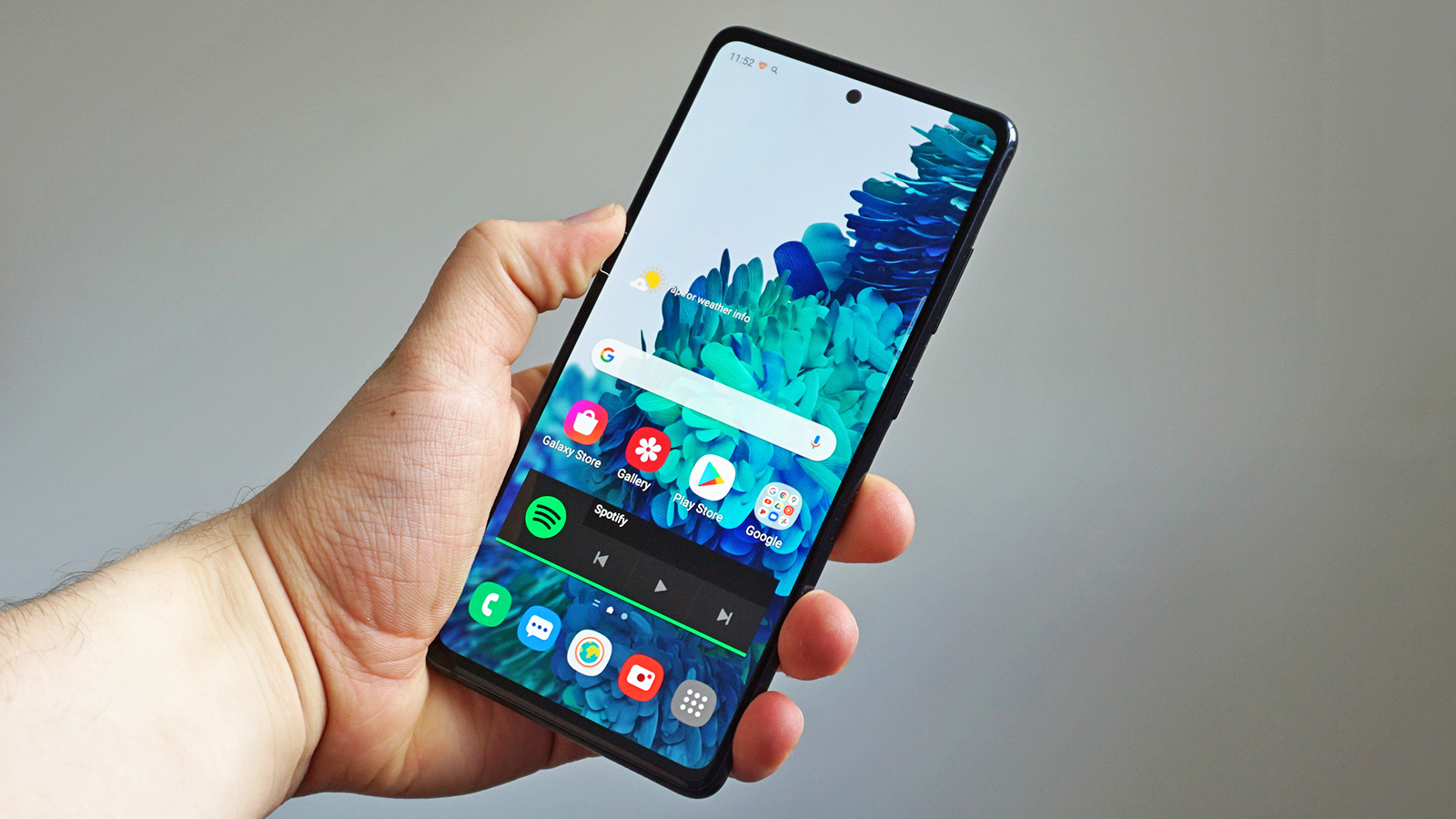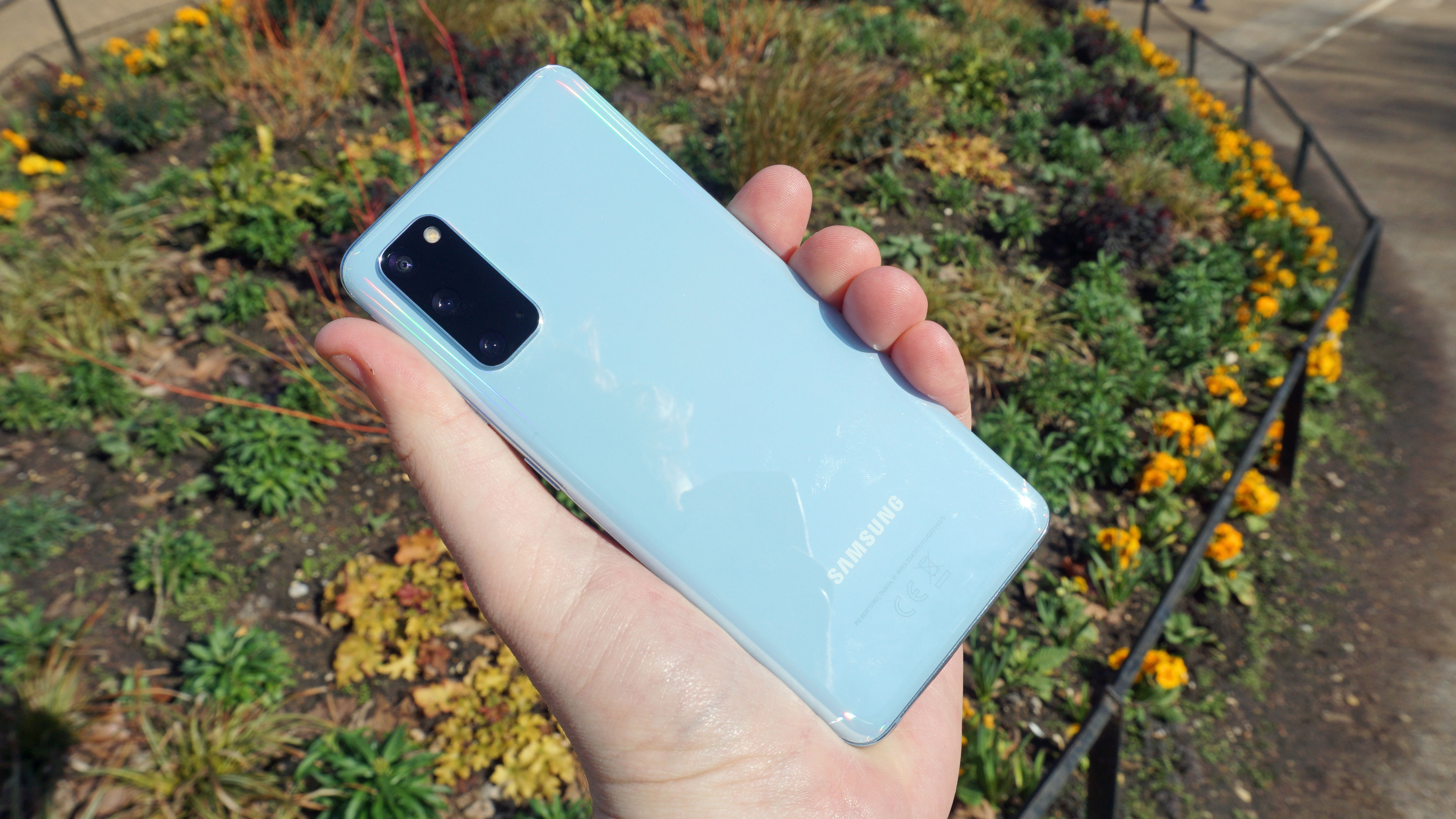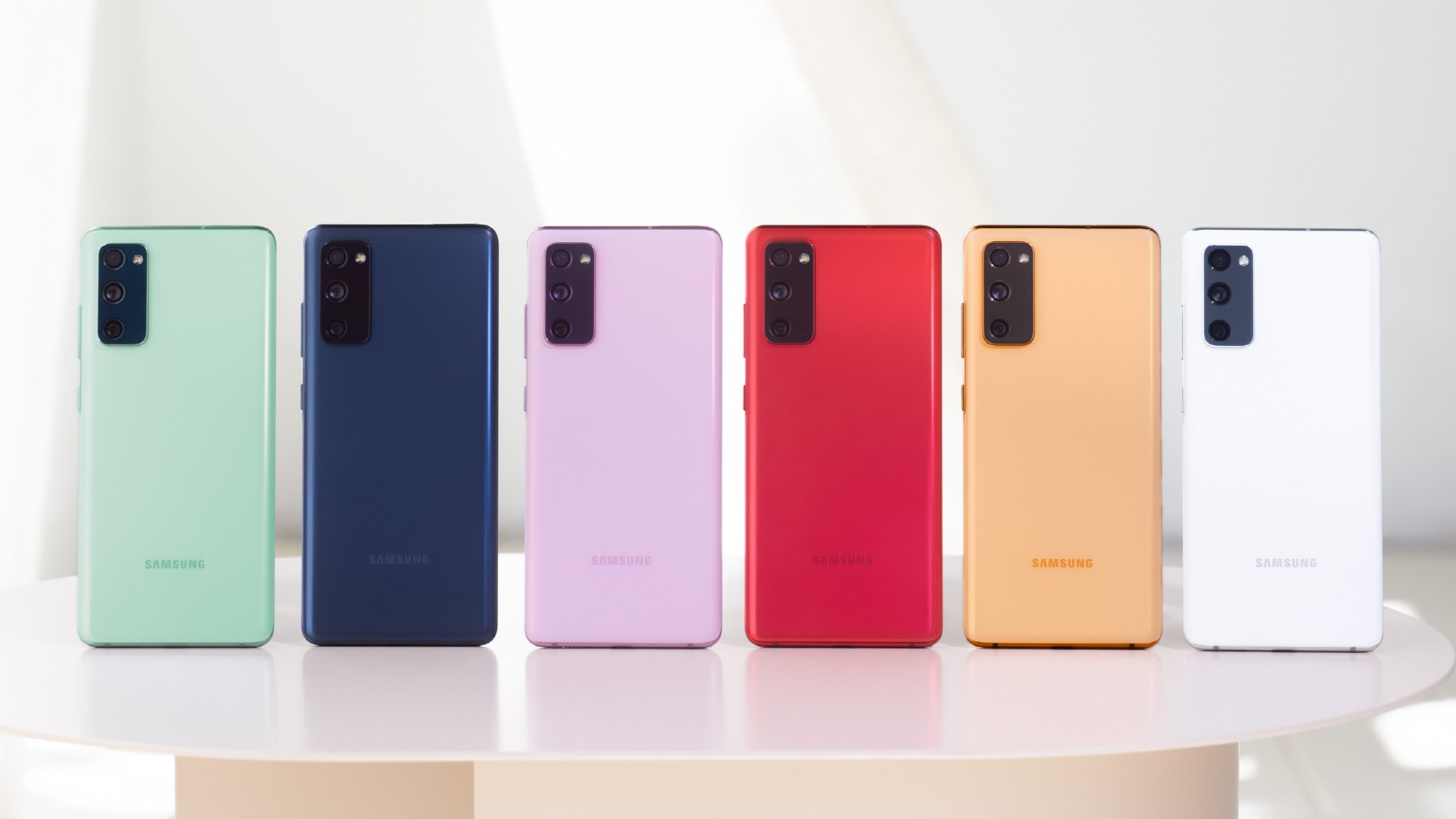With the Samsung Galaxy S21 family offering a wide range of options at the top end of the market, it’s perhaps easy to forget about the Samsung Galaxy S20 FE and the Samsung Galaxy S20.
But these premium phones were two of the stars of 2020, and they continue to have a lot to offer in 2021 - especially now that they’ve been heavily discounted. So the real question to ask is, which is the better buy of the two?
This is a fascinating face-off between two seasoned smartphone vets. You might just be surprised by the identity of the winner.
Samsung Galaxy S20 FE vs Samsung Galaxy S20 price and availability
The Samsung Galaxy S20 was released on March 06, 2020. The main 12GB of RAM / 128GB of storage model started at $999 / £899 / AU$1,499. In some regions, a 4G-only version of the phone (with just 8GB of RAM) was also made available for £799 / AU$1,349.
The Samsung Galaxy S20 FE landed in shops much later in the year on October 2, 2020, priced at $699/£699/AU$1,149 for the 5G model. Meanwhile, in the UK and Australia, a 4G model was made available for £599 and AU$999 respectively.
Going through a third party in 2021 will gain you some big savings in 2021. At the time of writing, you could buy a brand new Galaxy S20 5G for £727 through Amazon UK, and the 5G Galaxy S20 FE for £625.
Amazon US was selling the Samsung Galaxy S20 FE for just $600, though the Samsung Galaxy S20 5G seemed harder to find than the other models in the wider S20 family.
Design


The Samsung Galaxy S20 was the smallest of Samsung’s 2020 flagship phones, with relatively petite dimensions of 151.7 x 69.1 x 7.9mm and weighing a mere 163g. By comparison, the Samsung Galaxy S20 FE is a bit of a lump, with a 159.8 x 74.5 x 8.4mm body and a weight of 190g.
That’s despite the fact that the Galaxy S20 FE is made of less premium materials than the Galaxy S20. Prefiguring the Galaxy S21, Samsung opted to swap out a potential glass back for a ‘Glasstic’ hybrid material, thus helping to save on costs.
Compare the feel of the Galaxy S20 FE to the Galaxy S20 with its pure glass rear panel, and the smaller phone feels the most premium. Both have aluminum frames, however, so the difference is hardly night and day.
One other touch that makes the S20 FE feel a little cheaper is its flat display. The Galaxy S20 definitely looks sleeker with its dual-curved screen.
While such curved displays look good in pictures, however, they have well documented issues with false inputs and visual distortions. Practically speaking, we prefer the Galaxy S20 FE’s flat approach, even if our heart goes with the S20.
Otherwise, the Galaxy S20 FE design shares much in common with the Galaxy S20, from the shape and positioning of its rectangular camera module, to the hole punch selfie cam right in the middle of the top of the display. Both phones also have an IP68 dust and waterproof rating, so they’re similarly robust.
One thing the FE has to its advantage is a greater selection of color options. You can get the phone in six tones: Cloud Lavender, Cloud Orange, Cloud Red, Cloud Mint, Cloud White, and Cloud Navy. You have one fewer option with the Galaxy S20 in Cloud Blue, Cosmic Gray, Cloud Pink, Cloud White, and Aura Red - and not all colors are available in all markets.
Display

The Samsung Galaxy S20 FE’s display is technically a bit of a downgrade from the Galaxy S20’s, but most people won’t notice that one bit. In fact, with a larger screen size of 6.5-inches compared to the Galaxy S20’s 6.2-inches, many would probably pick the FE as the winner of any direct face-off.
Both screens are vibrant Super AMOLEDs from Samsung, which is a shorthand for saying that they both output stunningly vibrant colors and deep blacks at a decent brightness. Both also have a slick 120Hz refresh rate, so they scroll as fluidly as most of their rivals.
Where the Galaxy S20 FE display loses out to its older brother is in resolution. While the Galaxy S20 can hit 3200 x 1440, also known as WQHD+, the Galaxy S20 FE is stuck at 2400 x 1080 or Full HD+.
But here’s the thing: you can’t access all those lovely extra pixels at the same time as that rapid 120Hz refresh rate. It’s one or the other, which is a choice that has never quite sat well with us.
You could argue that the Galaxy S20 at least gives you the choice, but we generally advise people to stick 120Hz on and leave it at that. The difference between FHD and WQHD isn’t as pronounced as you might thing - not until you get up to 55-inch TV size, at any rate.
Both displays stash a fingerprint sensor underneath that display, but there is a difference. The Galaxy S20 uses an ostensibly more advanced ultrasonic variant, whereas the Galaxy S20 FE uses a standard optical sensor. Neither is the snappiest or most reliable sensor you’ll use, however.
Camera

Samsung has taken a slightly different approach to camera setup with these two phones. Both are triple-sensor affairs led by the same 12MP wide sensors, with a bright f/1.8 aperture and huge 1.8µm pixels.
You might assume that the ultrawide cameras are the same too, as both have 12MP sensors and f/2.2 apertures. However, the Galaxy S20’s ultrawide would seem to be superior to the FE’s, with a much larger sensor producing 1.4µm pixels next to the Galaxy S20 FE’s 1.12µm.
But the biggest difference between these two camera offerings comes with the telephoto portion of the package. While the Samsung Galaxy S20 went with a 64 MP f/2.0 sensor, the Galaxy S20 FE opts for a more modestly specced 8 MP f/2.4. Both have the capability to capture 3X zoomed shots, but while the Galaxy S20 FE’s is purely optical, the Galaxy S20 uses a hybrid system that involves using those extra pixels to crop in.
We liked the Galaxy S20 FE’s hardware-based approach in general, with appreciably sharp zoomed-in shots. However, we did notice that zoomed-in shots had slightly duller colors than with the other cameras.
Overall, we didn’t find the FE’s camera to be demonstrably inferior to the Galaxy S20’s. With that comparable main sensor carrying the bulk of the photographic load, both cameras produce bright and punchy snaps.
Samsung’s AI scene optimization can be a little overzealous for some tastes, with a tendency to oversaturate colors that can result in somewhat false-looking results. But it’s possible to turn this feature off for more sober and natural-looking shots.
Both camera set-ups are packed full of a the same features. Single Take will record a short 5 to 15-second video, and will then pull out the best stills and video footage from it. Live Focus is Samsung’s take on Portrait mode, granting your close-up subjects extra pop. Elsewhere, both phones have access to Samsung’s Night mode, which is very effective at brightening scenes - albeit not as well as rival offerings from Apple and Google.
On the selfie front, the Galaxy S20 FE has a 32MP front camera, while the Galaxy S20 has a 10MP sensor. Victory for the Galaxy S20 FE, then? Not necessarily - the Galaxy S20’s selfie cam captures larger pixels, which is generally preferable in low-light conditions.
Specs and performance

There’s an interesting split in the hardware approach between the Samsung Galaxy S20 and the Samsung Galaxy S20 FE. It isn’t apparent at first glance, but the Galaxy S20 FE will present a notable advantage for a lot of people.
For both phones Samsung split their System on Chip (SoC) supply between Samsung’s Exynos 990 and Qualcomm’s Snapdragon 865. But while the Galaxy S20 does so according to region (Snapdragon 865 in the US and China, Exynos 990 everywhere else), the Galaxy S20 FE splits it along the lines of network capability.
If you get the 5G Galaxy S20 FE, you’re guaranteed a Snapdragon 865 CPU. All 4G models pack the Exynos 990. This is a much fairer split than with any other Samsung flagship of recent times, and it’s a massive point in the FE’s favor for anyone outside the US or China.
While both of these chips are roughly in the same performance ballpark, they’re not identical. The Snapdragon 865 is both demonstrably faster and slightly more energy efficient than its home-brewed alternative.
To give you some kind of an indication, our Exynos-powered Galaxy S20 model scored an average of 2699 in our Geekbench 5 multi-core benchmark tests. The Snapdragon-powered Galaxy S20 FE scored 3130.
Elsewhere, the Samsung Galaxy S20 comes with 12GB of RAM, unless you opt for the 4G model, which has 8GB of RAM. The Galaxy S20 FE gives you 8GB of RAM.
Even with this memory shortfall factored in, though, any users outside of the US or China will find that the Galaxy S20 FE is a faster and more capable phone than the Galaxy S20. This despite the fact that it’s cheaper.
When it comes to storage, both phones come in 128GB and 256GB variants, and both offer microSDXC expansion.
Battery life
The Samsung Galaxy S20 comes with a 4,000mAh battery, while the Samsung Galaxy S20 FE has a larger 4,500mAh equivalent.
We weren’t bowled over with either phone’s stamina, in truth. Both will get you through to the end of the day in moderate usage scenarios, but features like 5G and those 120Hz displays take their toll in both cases if you exploit them to their fullest.
We should point out again that the Snapdragon 865 has been shown to be easier on battery life than the Exynos 990, which gives the Galaxy S20 FE the edge in most territories. But neither truly impresses.
Both phones support 25W wired charging, which isn’t particularly fast by modern standards. They also support 15W wireless charging and 4.5W reverse wireless charging, so you’ll be able to juice up compatible headphones off the back of them.
Takeaway

As we noted in our review, “The S20 FE has three of the S20’s winning traits: a fast screen refresh rate, great photography potential, and a powerful processor”. On the other hand, the Galaxy S20’s design feels a fair bit classier and more in keeping with its price.
Those points largely remain true in 2021. With discounts available on both handsets if you shop around, these are two well-priced phones with a lot to offer, even with the Galaxy S21 range out in the wild.
If we were to choose one phone, though, it would likely be the Samsung Galaxy S20 FE for most people. Not only is it the newer and cheaper device of the two, but the fact that the 5G model packs the superior Snapdragon 865 CPU in all markets makes it the more capable phone in most of the world.
from TechRadar - All the latest technology news https://ift.tt/2P7oz1M
No comments:
Post a Comment